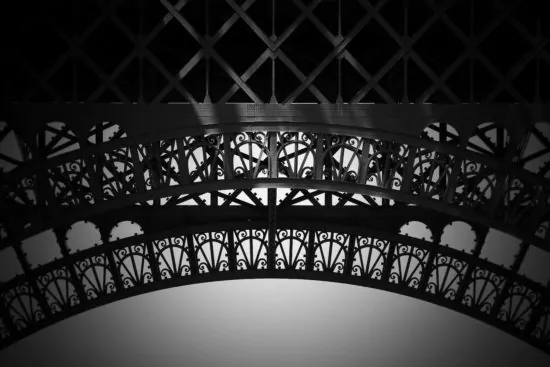Technologies to meet many challenges
Through our know-how, we help our customers, owners, developers and designers, to meet the construction and life cycle challenges of buildings: structural optimisation, large column-free spans, thin slabs, savings in building materials, reduced construction times, sustainability, etc.
-
Types of buildingsResidential buildings
Office buildings
High-rise buildings
Commercial centers
Industrial
Logistic platforms
Public facilities
Architectural challenges
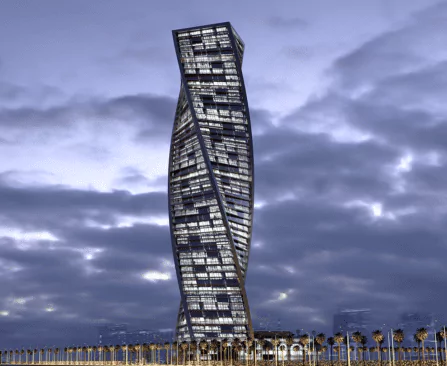
Freyssinet’s post-tensioning technology allows for large uninterrupted floor areas with a minimal number of columns allowing modular interior layouts and spaces, a reduced concrete slab thickness with minimal height between floors and a significantly reduced amount of rebar.
The gain in height can even be translated into an increase in the number of floors in a high-rise building.
The post-tensioned transfer slab is often used in high-rise buildings to provide a large space without load-bearing elements. It can withstand heavy concentrated loads with minimal slab thickness and controlled deformation.
Structural
specifications
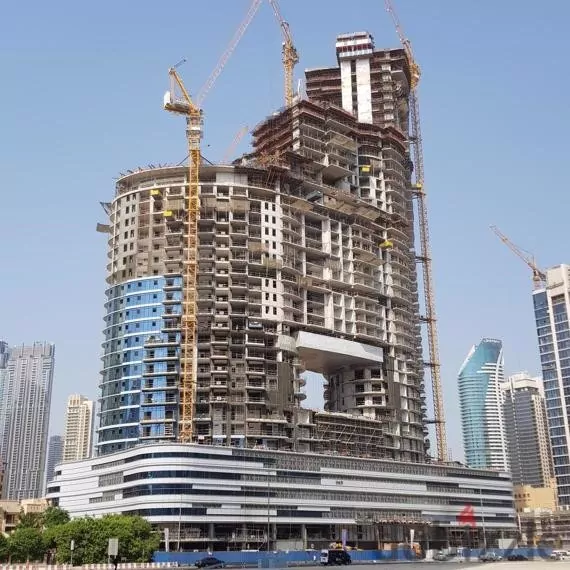
Prestressing by post-tensioning perfectly meets structural needs such as resistance to high service loads, minimal deflection, elimination of contraction joints and better control of concrete cracking.
High rise buildings present heavy loads and movement constraints that need to be considered in the design. Bearings are used to ensure load transfer while controlling vertical and horizontal movement.
With the ISOSISM range, Freyssinet offers multiple solutions, based on principles of isolation, dissipation by damping or connection, to help buildings resist earthquakes and wind loads.
High-rise buildings are subject to static and dynamic loads, including wind pressure and seismic accelerations in earthquake-prone areas. Our ISOSLAB technology provides a non-seismic zone on which developers can erect standard buildings with very limited consideration of seismic loads and seismic construction details.
Construction challenges
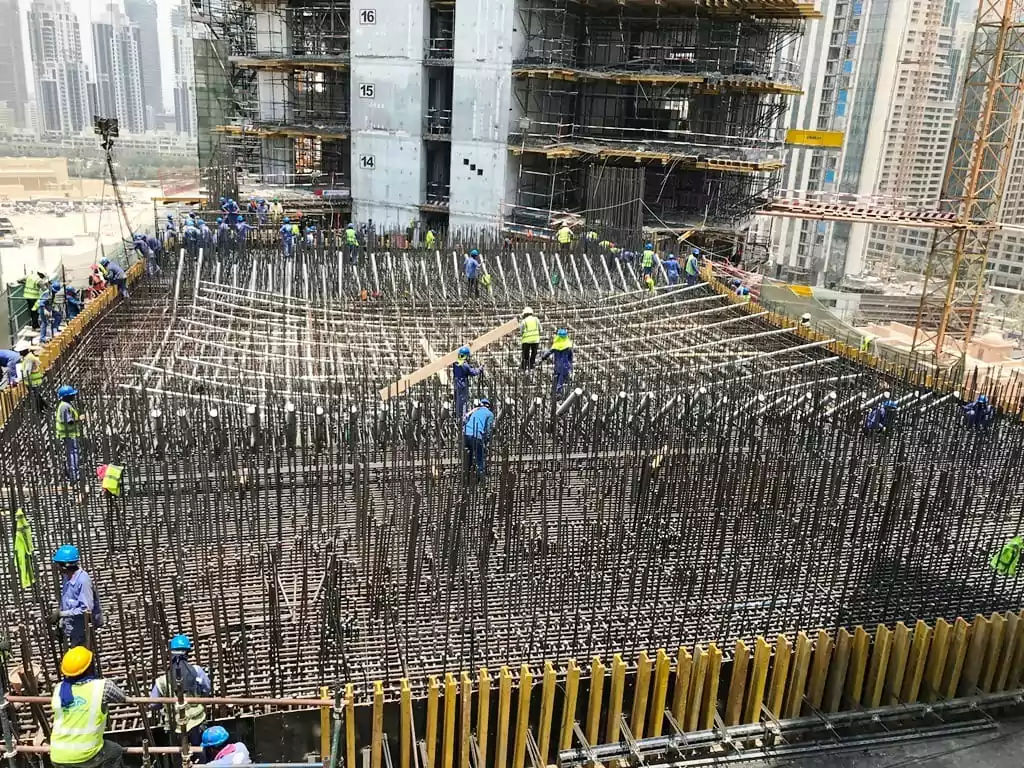
Prestressing by post-tensioning helps to reduce slab construction cycles by allowing earlier formwork stripping than a conventional cast-in-place solution and by simplifying the layout of the installed rebars.
The heavy lifting solutions developed by Freyssinet and our subsidiary Hebetec provide the right construction method whenever a lifting, sliding or lowering operation of a heavy structural element in a building cannot be performed by conventional crane equipment.
Deep excavations for future buildings require stability which can be provided by ground anchoring systems.
Basements in wet areas can be subject to significant water uplifts. Corrosion resistant ground anchors are used to hold the structure in place.
Durability
Regardless of the type of slabs, the main constraint to their durability is corrosion of the reinforcement when exposed to aggressive service conditions. By controlling the deflection and cracking of concrete with post-tensioning solutions, the rebars are better protected and the durability of the structure is improved.
Prestressing by post-tensioning of large industrial slabs eliminates contraction joints and better controls shrinkage and bending cracks. This improves the watertightness of the slabs and therefore their durability.
The durability of buildings subjected to static and dynamic loads is significantly improved by the damping capabilities of the ISOSIM range.
Industrial buildings have large concrete slabs that require contraction joints, which are vulnerable to wear and tear from traffic. The use of post-tensioning is particularly appreciated for industrial slabs receiving automated conveyor systems, as it eliminates the need for such joints.
Sustainability
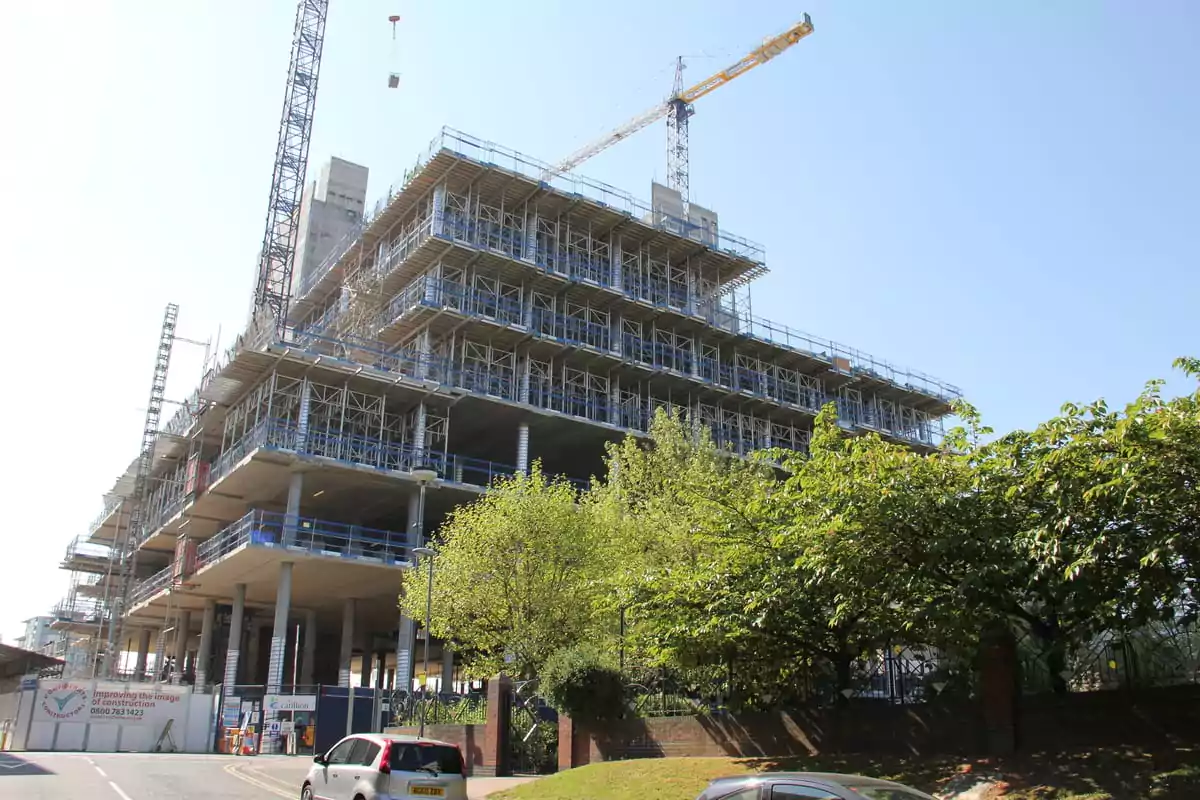
The use of post-tensioned floors results in a significant reduction in greenhouse gas emissions compared to an equivalent conventional reinforced concrete slab. This gain is directly linked to the reduction in the quantity of concrete by 25% and the quantity of passive reinforcement by 65%.
Design, supply build maintain
Solution design
Each technical solution we provide for buildings is engineered and designed.
For example, for post-tensioning slabs, we provide a detailed structural design of the slabs, including columns layout, interaction with vertical elements, calculation data and shop drawings.
Manufacture and supply
For all its technical solutions, Freyssinet provides exclusive manufactured products that meet high standards in terms of quality, technical performance and durability.
Execution
Technical solutions are executed by qualified and trained Freyssinet teams. The service goes beyond the installation of proprietary products and can cover different construction phases.
Maintenance
Using our extensive expertise in structural engineering and material behaviour, we provide inspection, pathology investigation and maintenance services for building structures.
Our specialist repair teams provide and implement engineered solutions to repair, strengthen or protect any identified damage, ensuring continuity of service throughout the life cycle of the structure and securing its longevity.
